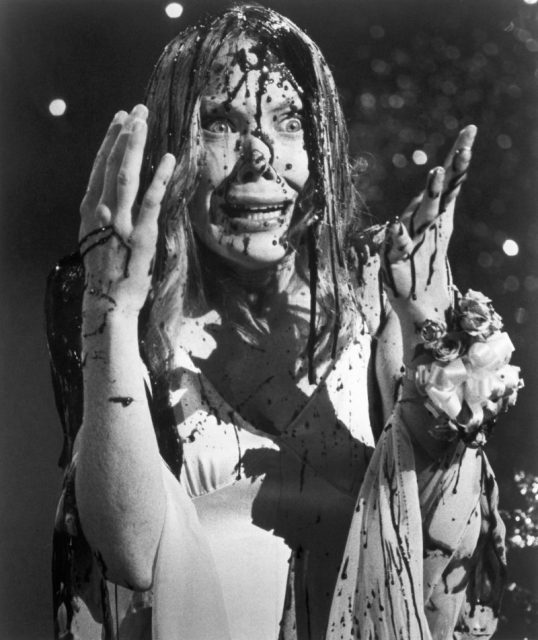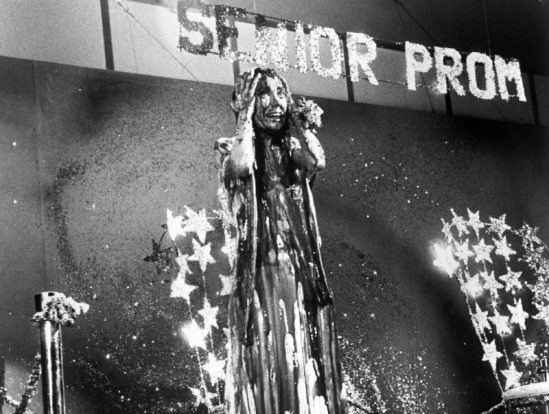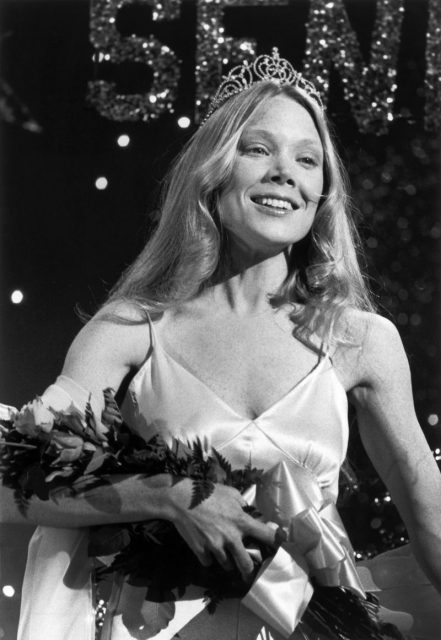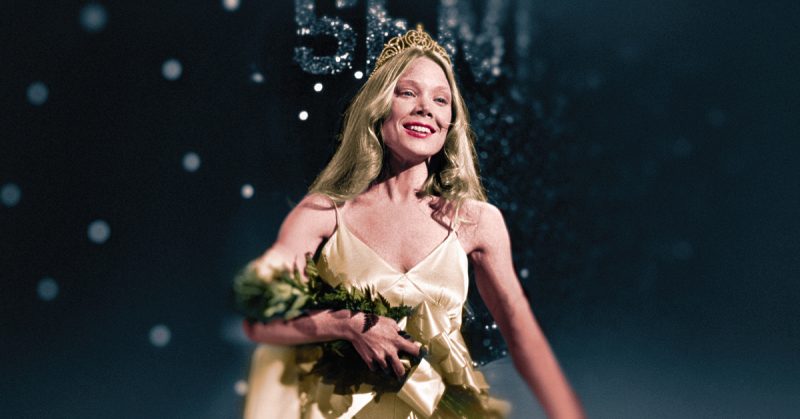It’s one of the most famous horror stories of all time, penned by literary icon Stephen King. Carrie is the tale of Carrietta “Carrie” White, a 16-year-old punching bag, whose life is something of a cruel joke.
Her mother, an unstable religious zealot — and, let’s be honest, something of a crackpot — controls the timid girl, filling her head with talk of eternal damnation (to wit: she believes that menstruation is the work of Satan), making Carrie an awkward, out-of-touch social outcast in high school and a target for callous classmates. As movie fans know, it all culminates in one doozy of a prom night, with Carrie, the victim of a vicious prank, using telekinetic powers to exact revenge on her nasty classmates.

While most of us are all too familiar with the story, not many know the inspiration behind it. King, who wrote the manuscript in 1973 (at a makeshift desk set up in his laundry room), modeled Carrie White after two girls he recalled from grade school.
Years later, King would say: “One was singled out because she wore the same clothes to school every day and was taunted by classmates. I have a very clear memory of the day she came to school with a new outfit she’d bought herself…she’d changed the black skirt and white blouse – which was all anybody had ever seen her in – for a bright-colored checkered blouse with puffed sleeves and a skirt that was fashionable at the time. And everybody made worse fun of her because nobody wanted to see her change the mold.”

The other girl, an introvert who suffered from epilepsy, had a fundamentalist mother, who kept an enormous crucifix hanging the living room wall. (Sound familiar?)
The remainder of the plot fell into place when King remembered an article he had read in Life magazine, suggesting that some young people, adolescent girls in particular, might possess telekinetic powers (the ability to move objects with one’s mind). “POW! Two unrelated ideas, adolescent cruelty and telekinesis, came together, and I had an idea …” recalled King in his 2000 book, On Writing: A Memoir of the Craft.
Related Video: The Incredible True Story Behind The Revenant
https://youtu.be/HfpOeVA87Ns
By the time King started pounding out pages, both girls were no more: one from a seizure, the other, shooting herself after uncontrollable bouts of postpartum depression. The tragic fates of his former classmates, along with the unconscionable way in which they were treated, made the writing of Carrie difficult, to say the least. “Very rarely in my career have I explored more distasteful territory,” King has said, about confronting the ghosts of his past.

(Photo by Michael Ochs Archives/Getty Images)
Not everyone embraced the book initially. In fact, King’s manuscript was rejected by no less than 30 publishers. But Doubleday Publishing would come through, buying the rights and giving King a $2500 advance — the most money he had ever pocketed from writing. When Carrie was first released in 1974, a measly 13,000 copies were sold. King shrugged and moved on to his next project. But when the book became a paperback, it got new life when Signet Books bought the rights for $400,000.

Smart move: Carrie would sell over a million copies in its first year, despite a lukewarm critical response. Years later, King would agree with his detractors. “It reminds me of a cookie baked by a first grader,” he said of his debut novel. “Tasty enough, but kind of lumpy and burned on the bottom.” However, the book-buying public begged to differ. Carrie struck a nerve, particularly among teenage girls and young women. In 1975 it became a movie, with Sissy Spacek in the title role.

The Brian De Palma-directed flick would go on to become a box office hit, and Spacek’s heart-wrenching performance would earn her an Academy Award nomination for Best Actress. Since then, Carrie has spawned a 2013 big-screen remake, a 2002 TV movie, and a 1988 Broadway play. The story’s enduring popularity may lie in the fact that so many of us find it all too easy to relate to the cruelties of adolescence. King himself has acknowledged as much.
Read another story from us: 5 Classic Horror Movies Inspired by Crazy Real Life Events
Carrie, he once noted, “is a sadly mis-used teenager, an example of the sort of person whose spirit is so often broken for good in that pit of man- and woman-eaters that is your normal suburban high school.”
